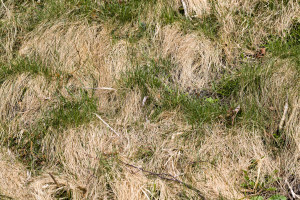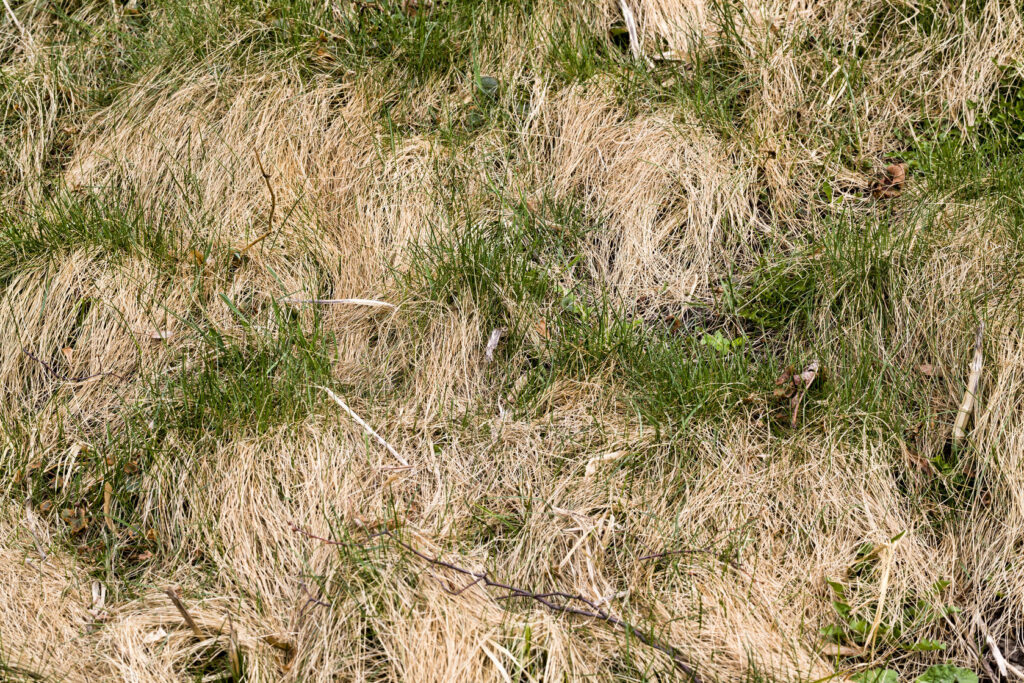 Like any living thing, the grass in your yard is susceptible to disease. With warm-season grasses, one disease you have to be careful of is a disease called large patch. If you have never heard of it, that is OK—consider this your chance to learn!
Like any living thing, the grass in your yard is susceptible to disease. With warm-season grasses, one disease you have to be careful of is a disease called large patch. If you have never heard of it, that is OK—consider this your chance to learn!
If your lawn is suffering from large patch, do not worry, as there are a few treatment methods you can use to control and prevent this fungal disease in warm-season lawns. If you are unsure, your local extension office is a great resource to help diagnose the issue. Ready to learn more?
What is large patch?
Large patch is a fungal disease caused by a strain of Rhizoctonia solani that affects warm-season grasses such as zoysia and St. Augustine. When large patch affects zoysia, it is sometimes called zoysia patch. Bermuda grass typically is not affected by large patch.
The importance of maintenance
You already know maintenance is important to keep your lawn looking beautiful, and the ability to fight off disease is one important benefit of properly maintaining your sod. When grass is not receiving proper maintenance, it becomes vulnerable to diseases like large patch. As Sod University explains, large patch may appear when grass is treated with too much nitrogen, over-irrigated, poorly drained, has thatch, or is mowed at a low height. Also, keep in mind that large patch is not really a problem during months when the temperature is high and the air is humid. It is more likely to appear once soil temperatures drop to 70 degrees Fahrenheit.
Recognizing large patch
The first signs of a large patch outbreak are a circular or oblong pattern of light yellow discolored grass that turns from orange to tan as the fungus infects the grass leaves, resulting in rotting. The discoloration spreads like spilled tea, leaving tiny patches of green grass in the middle. Once a homeowner detects large patch, the fungus has already taken hold. Prevention is a better strategy than treatment, if possible. Large patch generally begins in the fall, but it becomes more prominent during cool, wet weather in the spring.
Large patch vs. brown patch
Large patch is often confused with brown patch disease, as both are caused by the same pathogen. Brown patch generally affects cool-season grasses like bluegrass or fescue and is common in the summer. These patches are perennial, so homeowners should expect them to grow larger every year. This means they must be treated to avoid any major damage to the lawn.
Treatment options
As Gardening Solutions from the University of Florida states, “The best way to treat large patch is also the best way to prevent it: make sure that your lawn care is seasonally appropriate.”
Proper lawn maintenance is the best way to help control lawn diseases like large patch, such as regular dethatching and not applying too much nitrogen to warm-season grasses in the fall and spring. Irrigation to your lawn should only be done as needed. Aeration can also help promote better soil drainage and, of course, always mow your lawn to the proper height. If you are not sure what nutrients are available in your lawn and which ones are needed, consider testing your soil. The local extension office can help with conducting soil testing. Once homeowners know what nutrients are needed by their lawn, an effective fertilizer can be selected.
Another option for preventing large patch is to avoid growing turfgrass in low-lying areas of your lawn, as these areas usually have poor drainage and receive excess water from surface runoff. If your lawn has several low-lying areas where water collects, you may want to consider installing sub-surface drainage or try leveling the areas.
Large patch can also be treated with several fungicides, which should be applied in the fall before large patch problems worsen.
Talk to the experts at Bayside Sod about caring for your zoysia, St. Augustine, and Bermuda grasses.


